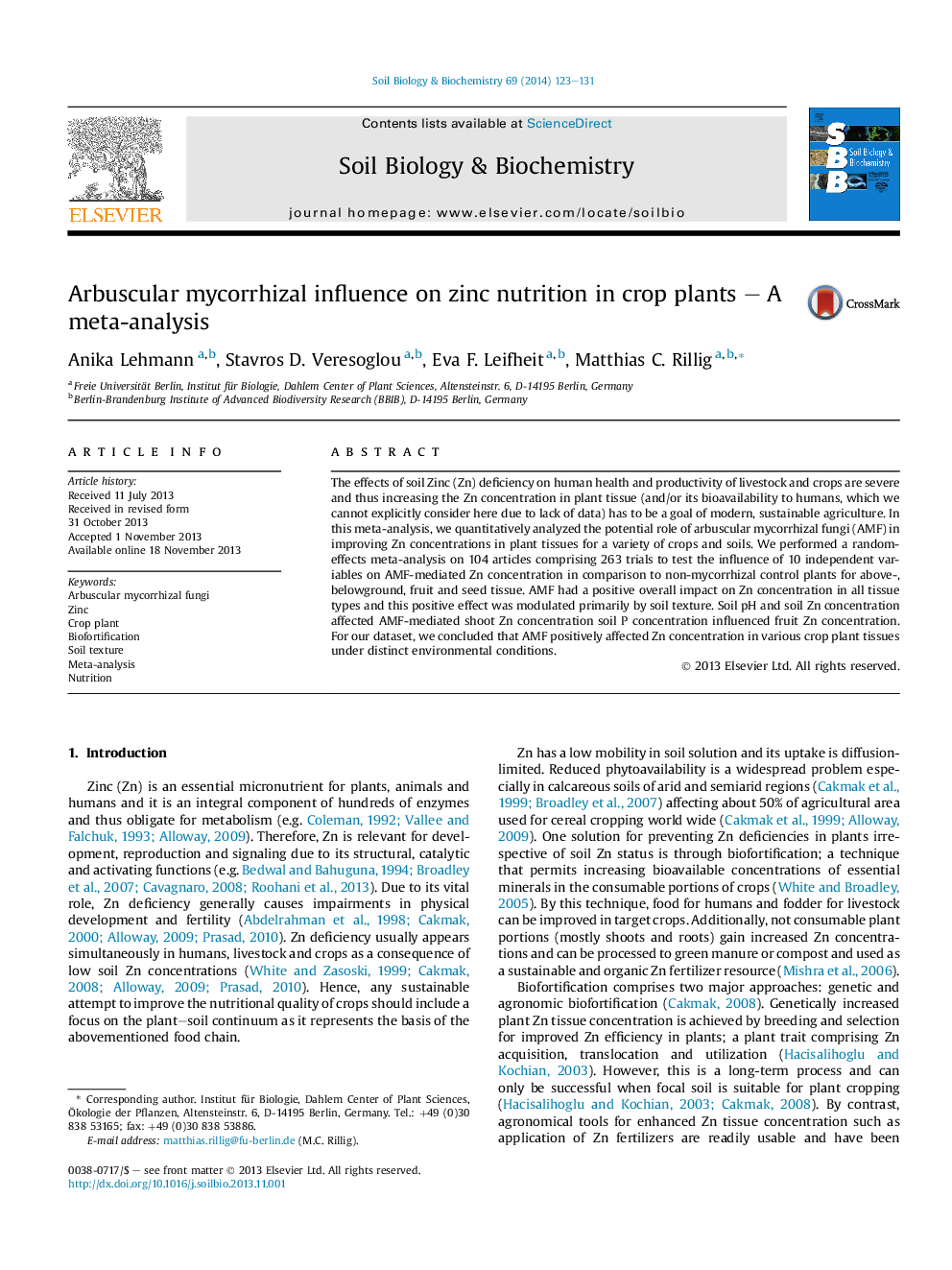| Article ID | Journal | Published Year | Pages | File Type |
|---|---|---|---|---|
| 2024721 | Soil Biology and Biochemistry | 2014 | 9 Pages |
•We performed a meta-analysis on AMF-mediated effect on Zn tissue concentration.•AMF had a positive overall impact on Zn concentration in shoot, root and fruit.•Soil texture was the primary modulator of the AMF-mediated effect.•In shoots, soil pH and soil Zn concentration were influencing factors.•In fruits, soil P concentration affected the AMF-mediated Zn concentration.
The effects of soil Zinc (Zn) deficiency on human health and productivity of livestock and crops are severe and thus increasing the Zn concentration in plant tissue (and/or its bioavailability to humans, which we cannot explicitly consider here due to lack of data) has to be a goal of modern, sustainable agriculture. In this meta-analysis, we quantitatively analyzed the potential role of arbuscular mycorrhizal fungi (AMF) in improving Zn concentrations in plant tissues for a variety of crops and soils. We performed a random-effects meta-analysis on 104 articles comprising 263 trials to test the influence of 10 independent variables on AMF-mediated Zn concentration in comparison to non-mycorrhizal control plants for above-, belowground, fruit and seed tissue. AMF had a positive overall impact on Zn concentration in all tissue types and this positive effect was modulated primarily by soil texture. Soil pH and soil Zn concentration affected AMF-mediated shoot Zn concentration soil P concentration influenced fruit Zn concentration. For our dataset, we concluded that AMF positively affected Zn concentration in various crop plant tissues under distinct environmental conditions.
